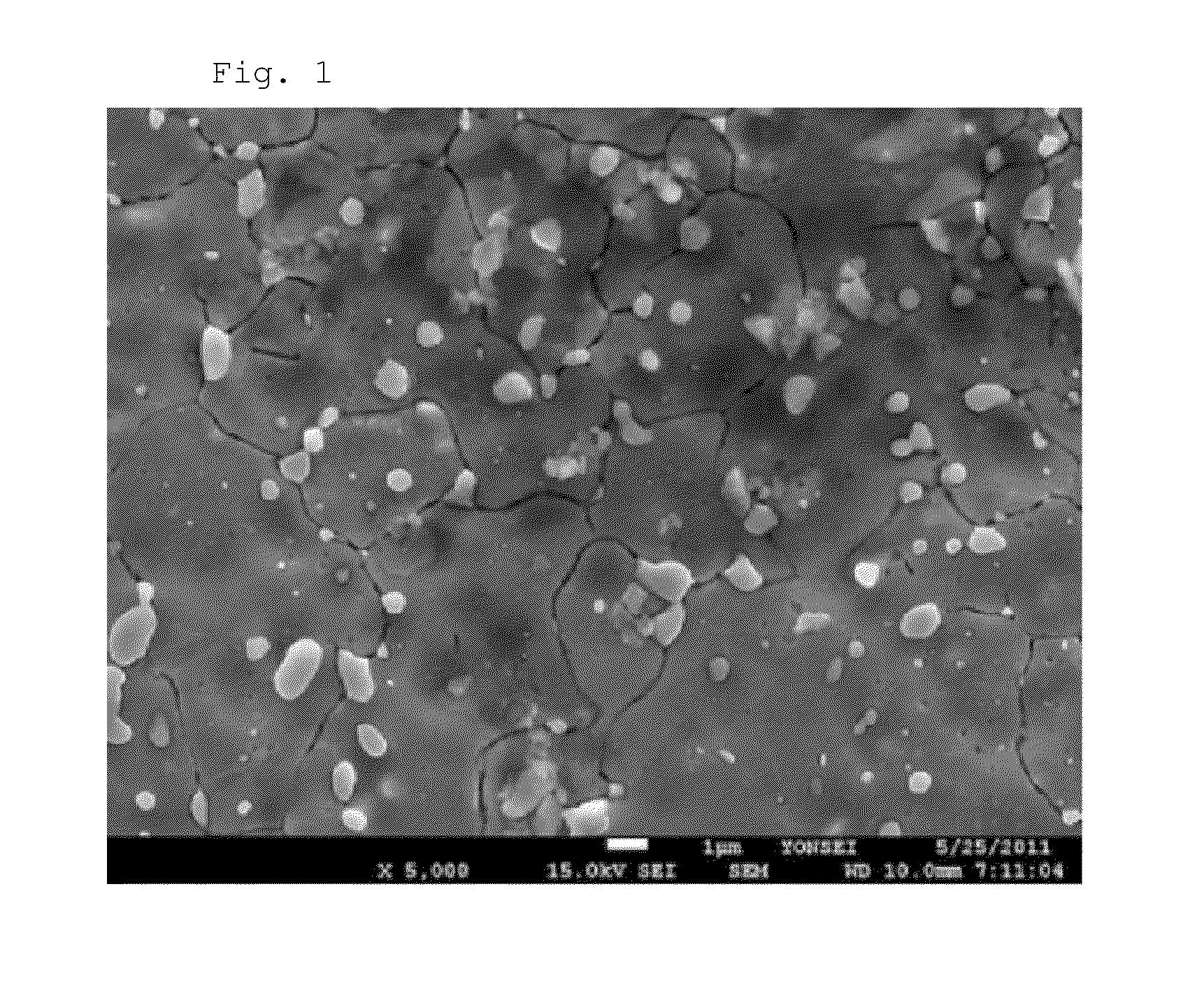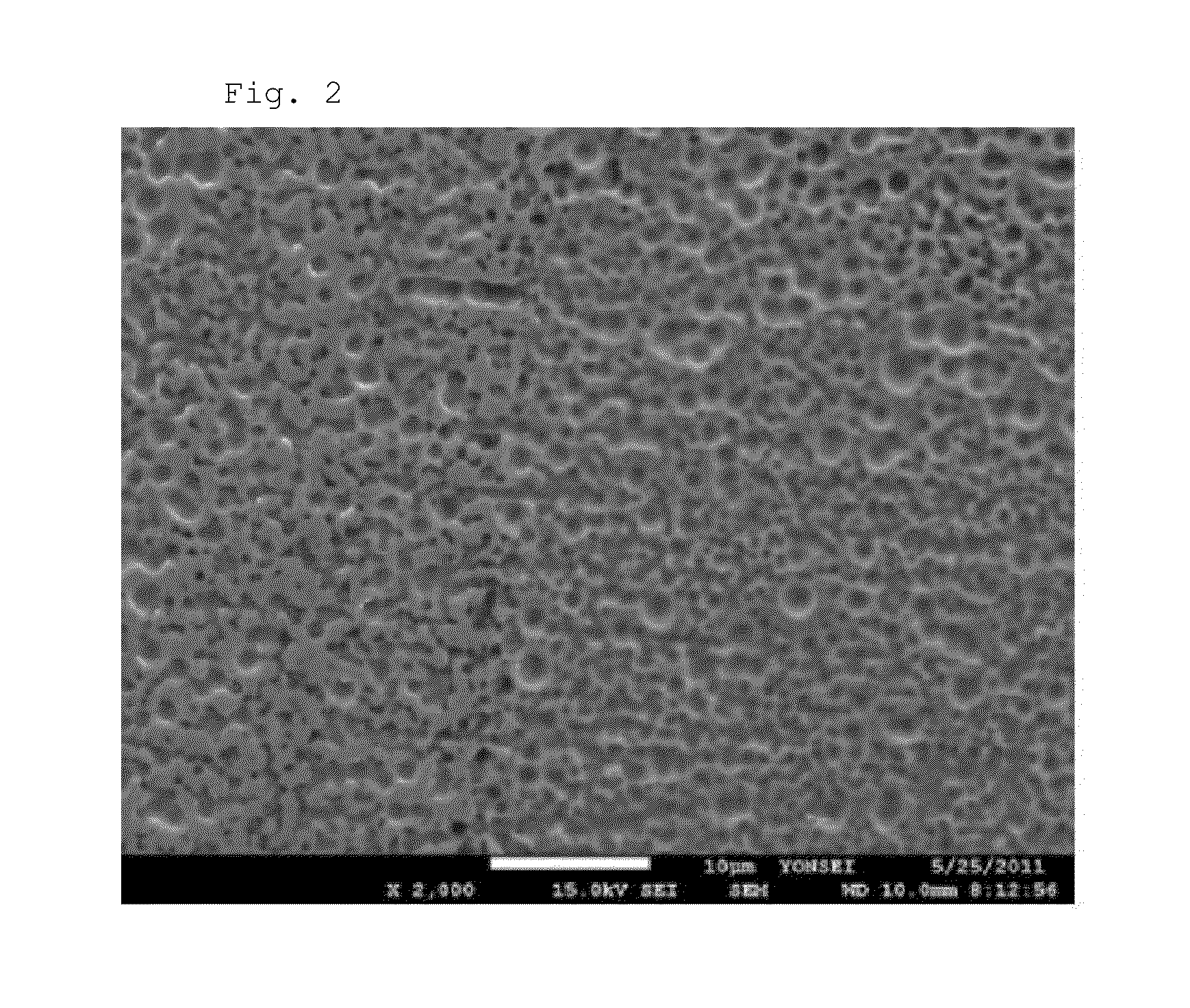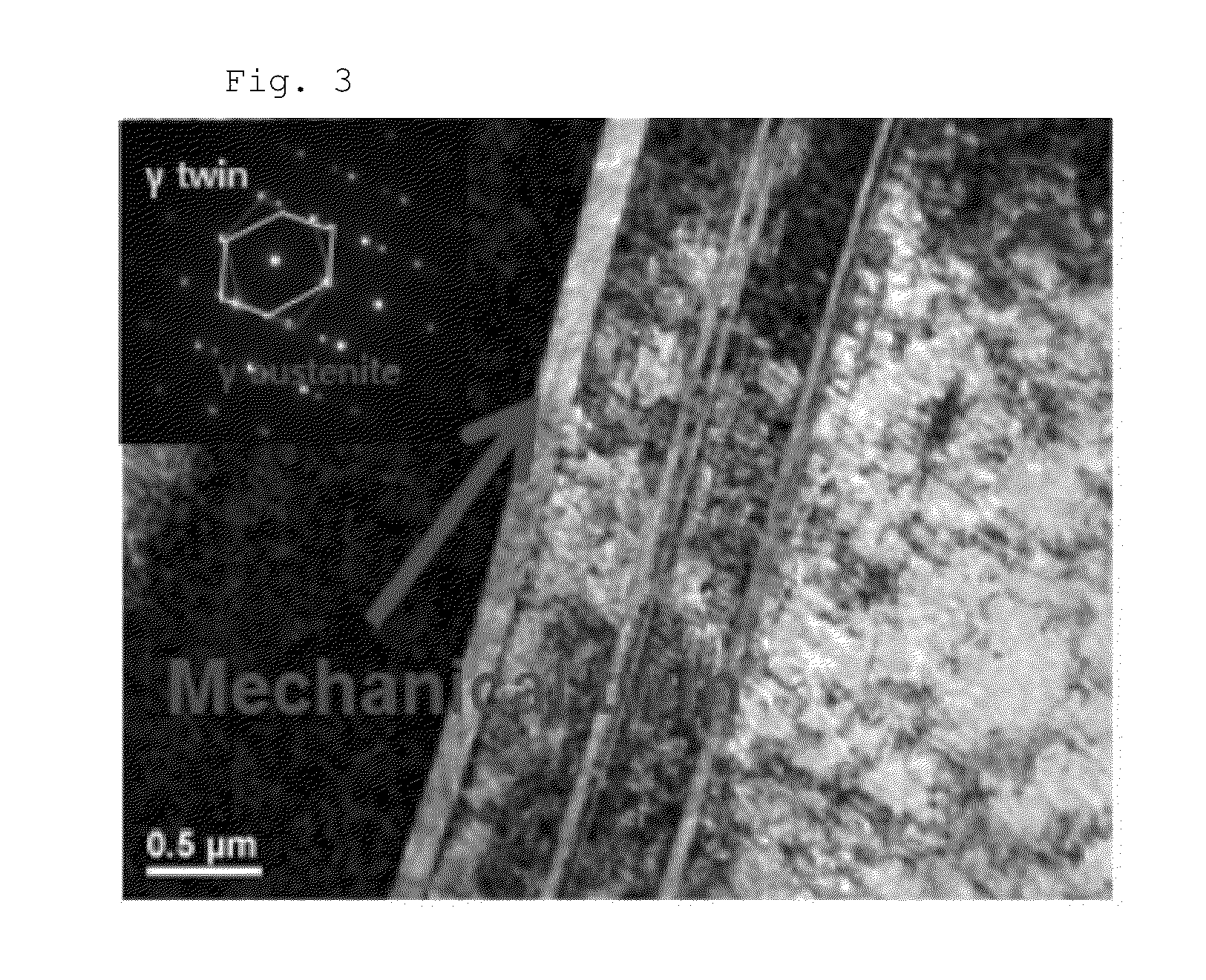High-strength and high-ductility steel sheet and method of manufacturing the same
a high-ductility, steel sheet technology, applied in the direction of manufacturing tools, furnaces, heat treatment equipment, etc., can solve the problems of difficult to achieve an elongation of 30% or more, short elongation, and high work hardening of steel sheets, so as to achieve high work hardening, reduce manufacturing costs, and effectively control the effect of racking fault energy
- Summary
- Abstract
- Description
- Claims
- Application Information
AI Technical Summary
Benefits of technology
Problems solved by technology
Method used
Image
Examples
examples
[0055]3 mm thick steel sheets, the chemical compositions of which are presented in Table 1 below, were formed by heating at a temperature of 1100° C. or higher, followed by hot rolling at a temperature of 900° C. or higher. The steel sheets were subsequently subjected to oil cooling or water cooling, thereby manufacturing steel samples (Inventive Examples 1 to 3 and Comparative Examples 1 to 7). In addition, part of the hot-rolled steel samples were subjected to annealing heat treatment at 800 to 1200° C. for 5 to 10 minutes, followed by oil cooling or water cooling.
TABLE 1Composition (wt %)Sample No.CMnCrRemarksInventive Ex. 11.227.343.03Water cooled afterannealed at 1200° C.Inventive Ex. 21.187.234.89Water cooled afterannealed at 1200° C.Inventive Ex. 31.237.426.92Water cooled afterannealed at 1200° C.Comp. Ex. 11.227.343.03Water cooled afterannealed at 1000° C.Comp. Ex. 21.187.244.89Water cooled afterannealed at 1000° C.Comp. Ex. 31.237.426.92Water cooled afterannealed at 1000° C...
PUM
| Property | Measurement | Unit |
|---|---|---|
| temperature | aaaaa | aaaaa |
| temperature | aaaaa | aaaaa |
| temperature | aaaaa | aaaaa |
Abstract
Description
Claims
Application Information
 Login to View More
Login to View More - R&D
- Intellectual Property
- Life Sciences
- Materials
- Tech Scout
- Unparalleled Data Quality
- Higher Quality Content
- 60% Fewer Hallucinations
Browse by: Latest US Patents, China's latest patents, Technical Efficacy Thesaurus, Application Domain, Technology Topic, Popular Technical Reports.
© 2025 PatSnap. All rights reserved.Legal|Privacy policy|Modern Slavery Act Transparency Statement|Sitemap|About US| Contact US: help@patsnap.com



